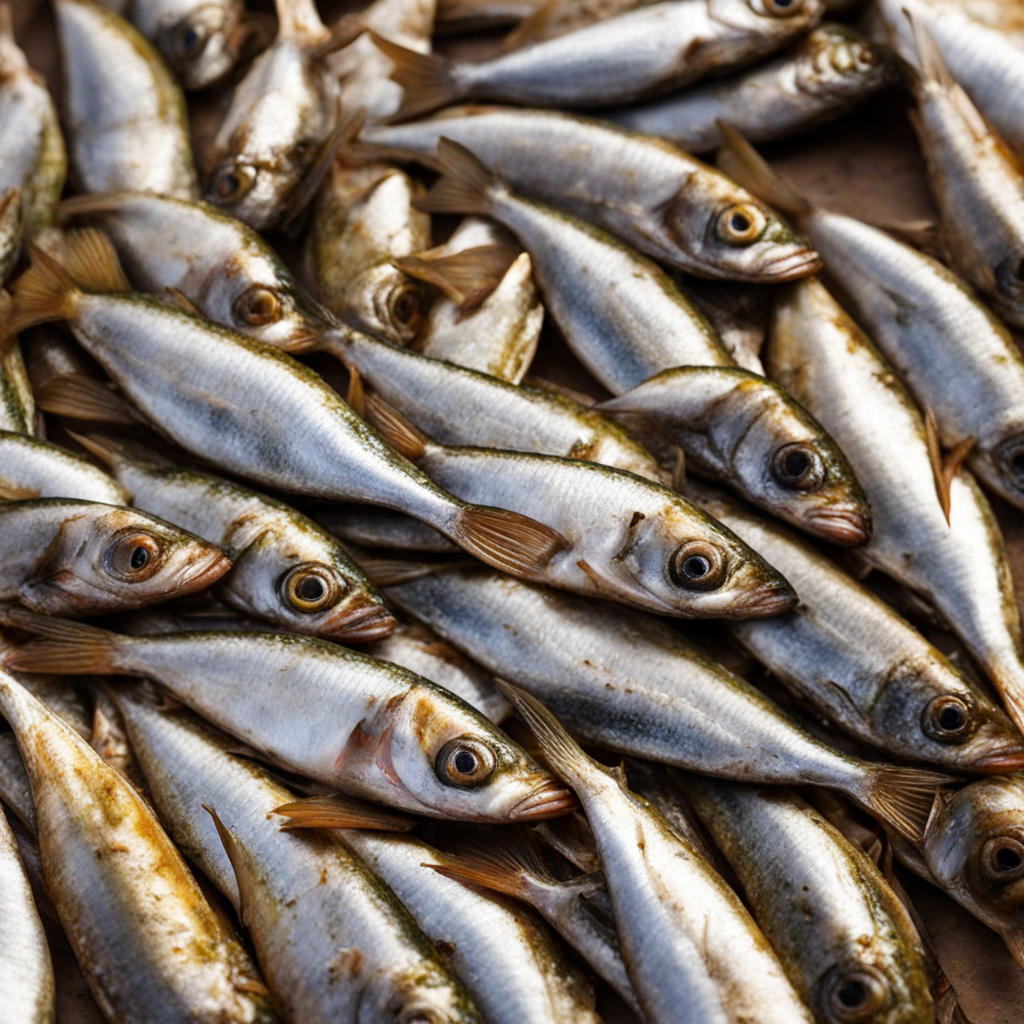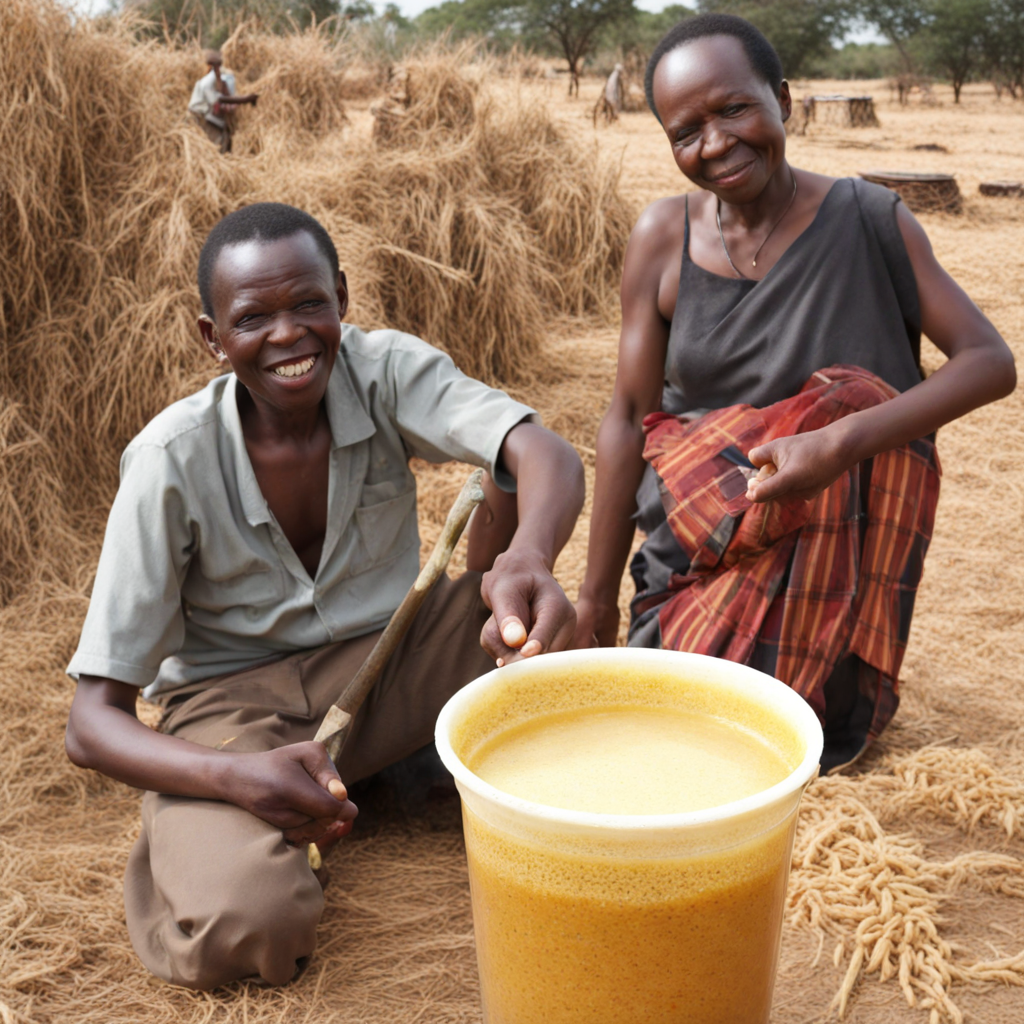Kapenta
Kapenta, a beloved staple from Zambia, is a small freshwater fish that is often dried and preserved. Known scientifically as 'Limnothrissa miodon', this tiny fish is typically found in the vast waters of Lake Tanganyika and is a significant source of protein for many Zambians. The unique preparation process involves sun-drying the fish, which intensifies its flavor and gives it a distinctive, slightly salty taste. The drying process not only preserves the fish but also enhances its umami characteristics, creating a savory depth that is hard to resist. When it comes to enjoying kapenta, the possibilities are endless. Traditionally, it can be rehydrated and cooked in various ways, such as sautéed with onions, tomatoes, and a blend of spices. This creates a delightful dish that is often served alongside staple foods like nshima, a thick porridge made from maize flour. The combination of the rich, savory kapenta and the neutral, comforting nshima offers a balance that is both satisfying and nourishing. The fish can also be incorporated into stews or grilled for a smoky flavor, making it a versatile ingredient in Zambian cuisine. The taste of kapenta is not just about the fish itself; it's about the experience it brings. With a slightly crunchy texture and a robust flavor profile, every bite offers a journey into Zambian culinary culture. Whether enjoyed as part of a traditional meal or as a snack on its own, kapenta is a representation of the country’s rich aquatic resources and the creative ways in which local ingredients can be transformed into delicious dishes. For adventurous eaters looking to expand their palate, kapenta provides a unique taste that reflects the vibrant flavors of Zambia.
How It Became This Dish
The History and Cultural Significance of Kapenta in Zambia Kapenta, a small freshwater fish belonging to the family of the Tanganyika sardine, is not just a staple food in Zambia; it is a vibrant thread woven into the cultural, social, and economic fabric of the nation. Its journey from the depths of Lake Tanganyika to every Zambian plate is a fascinating tale of local ingenuity, adaptation, and cultural significance. #### Origins and Early History The origins of kapenta can be traced back to the rich aquatic ecosystems of Lake Tanganyika, one of the oldest and deepest lakes in the world, located on the border between four countries: Zambia, Tanzania, Burundi, and the Democratic Republic of the Congo. The lake is renowned for its biodiversity, home to a multitude of fish species, among which kapenta stands out for its nutritional value and abundance. Historically, local communities along the shores of Lake Tanganyika have relied on fishing as a primary source of sustenance. For centuries, these communities developed fishing techniques and practices that were sustainable and respectful of their environment. The kapenta fishery began to gain prominence in the mid-20th century, particularly after the introduction of modern fishing methods and equipment. This shift not only increased kapenta’s availability but also allowed it to transition from a local delicacy to a commercial product. #### Cultural Significance Kapenta holds a special place in Zambian culture, synonymous with community, tradition, and nourishment. It is more than just a food source; it represents a way of life for many Zambians. The fishing process itself is often communal, with families and neighbors coming together to cast nets and share in the labor and bounty. This communal aspect of kapenta fishing strengthens social bonds and fosters a sense of belonging. In Zambian cuisine, kapenta is typically prepared in several ways, including frying, stewing, or drying. The most common method involves frying the fish with tomatoes, onions, and spices, creating a dish rich in flavor and deeply satisfying. When dried, kapenta can be stored for long periods, making it an essential food resource, particularly during the lean season when fresh fish is scarce. The versatility of kapenta allows it to be paired with staple foods such as nshima (a thick porridge made from maize flour), beans, and vegetables, making it a key component of many traditional meals. Moreover, kapenta plays a significant role in various Zambian rituals and celebrations. It is often served during important gatherings and festivities, symbolizing prosperity and abundance. The fish is not just nourishment for the body but also for the spirit, bringing people together in celebration and shared joy. #### Economic Development The kapenta fishery has evolved into a vital economic sector for Zambia, contributing significantly to the livelihoods of many families. The commercialization of kapenta began in earnest in the 1970s when the government recognized the potential of the fishery industry for economic development. With investments in fishing technology and infrastructure, including the establishment of fish processing plants and cold storage facilities, kapenta became a significant export product. The fishery has also attracted foreign interests, leading to joint ventures and partnerships that have further developed the sector. Kapenta exports have expanded beyond Zambia’s borders, reaching markets in neighboring countries and even overseas. This economic growth, however, comes with challenges, including overfishing and environmental concerns. As demand for kapenta increases, it is crucial for Zambian authorities and communities to implement sustainable fishing practices to ensure the longevity of this precious resource. #### Modern Developments and Future Prospects In recent years, the kapenta industry has faced new challenges, including climate change, which affects fish populations and water quality in Lake Tanganyika. As temperatures rise and weather patterns shift, the delicate balance of the lake's ecosystem is at risk. Local fishermen and women are adapting by diversifying their fishing practices and exploring aquaculture as a means to supplement their income and ensure food security. Moreover, the rise of social media and digital marketing has presented new opportunities for kapenta producers and sellers. Through online platforms, small-scale fishermen can reach wider audiences, promoting their products and sharing their stories with consumers who are increasingly interested in sustainable and locally sourced foods. This shift not only helps to boost local economies but also fosters a greater appreciation for traditional foods like kapenta. The Zambian government and various NGOs are also working to promote sustainable fishing practices and educate communities about the importance of preserving the lake's ecosystem. Initiatives aimed at raising awareness about overfishing and environmental conservation are crucial for the future of kapenta and the communities that depend on it. #### Conclusion Kapenta is more than just a fish; it is a symbol of Zambian heritage and identity. Its journey from the depths of Lake Tanganyika to the dining tables of Zambians speaks to the resilience and ingenuity of local communities. As Zambia continues to navigate the challenges and opportunities of the modern world, kapenta will undoubtedly remain an integral part of its cultural and economic landscape. Whether enjoyed as part of a communal feast, served at a family gathering, or exported to international markets, kapenta represents a connection to the land, the lake, and the people of Zambia. Its rich history is a testament to the enduring relationship between nature and culture, reminding us of the importance of sustainable practices in preserving our food heritage for generations to come.
You may like
Discover local flavors from Zambia







